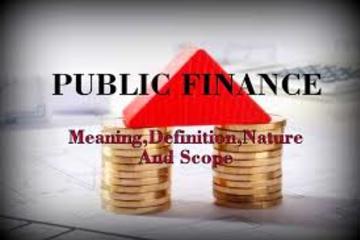We found 38 results that contain "achievement"
Posted on: #iteachmsu

Achieving work life balance is possible with effective time management. Learning time management tip
Different people need different effective time management strategies. If you’re a graduate student, you may choose to manage your time in a different way than someone who is a working mother. If you’re a visual person, you may prefer a color-coded calendar over a written to do list.
Figuring out a process that works for you, whatever that may be, is key to creating your most efficient life. To help you improve poor time management, we’ve explored nine popular techniques, from the 80/20 rule to the “eat that frog” method. We’ve outlined what they are, how to implement them, and the types of people who most benefit from them. And, check out our infographic below that includes a flowchart to help you decide which time management process will work the best for you.
Figuring out a process that works for you, whatever that may be, is key to creating your most efficient life. To help you improve poor time management, we’ve explored nine popular techniques, from the 80/20 rule to the “eat that frog” method. We’ve outlined what they are, how to implement them, and the types of people who most benefit from them. And, check out our infographic below that includes a flowchart to help you decide which time management process will work the best for you.
NAVIGATING CONTEXT
Posted on: #iteachmsu


Assessment Reliability
The educator scores student work reliably by using protocols to engage in collaborative, structured discussions. These discussions will focus on accurately and consistently documenting evidence within the student work of achievement of the learning target(s).
Method Components
The Advanced Performance Assessment for Learning Design stack is designed so that, if all three credentials are taken together, they will become more than the sum of their parts. Each micro-credential is intended to be able to stand on its own; however, the ideas and activities of each of these credentials support and expand on the others, allowing a fuller appreciation of performance assessment and its implications. Even more value will be gained by engaging in all three Performance Assessment for Learning stacks together.
Method Components
The Advanced Performance Assessment for Learning Design stack is designed so that, if all three credentials are taken together, they will become more than the sum of their parts. Each micro-credential is intended to be able to stand on its own; however, the ideas and activities of each of these credentials support and expand on the others, allowing a fuller appreciation of performance assessment and its implications. Even more value will be gained by engaging in all three Performance Assessment for Learning stacks together.
PEDAGOGICAL DESIGN
Posted on: #iteachmsu


ADHD Students and Classroom Considerations
The culture of the classroom can either support or create barriers to student success (Piffner,
2011).
Factors that foster attention, positive behavior, and academic and social success include
establishing positive relationships with students, adopting classroom management techniques,
and creating a physical arrangement that facilitates learning.
It is often a positive relationship with one teacher that facilitates school success for a student
with ADHD (Piffner, 2011).
When teachers connect with students and appreciate their unique skills and interests, students are more likely to strive for achievement and positively respond to classroom rules and procedures.
2011).
Factors that foster attention, positive behavior, and academic and social success include
establishing positive relationships with students, adopting classroom management techniques,
and creating a physical arrangement that facilitates learning.
It is often a positive relationship with one teacher that facilitates school success for a student
with ADHD (Piffner, 2011).
When teachers connect with students and appreciate their unique skills and interests, students are more likely to strive for achievement and positively respond to classroom rules and procedures.
Posted on: #iteachmsu


Assessment Reliability
The educator scores student work reliably by using protocols to engage in collaborative, structured discussions. These discussions will focus on accurately and consistently documenting evidence within the student work of achievement of the learning target(s).
Method Components
The Advanced Performance Assessment for Learning Design stack is designed so that, if all three credentials are taken together, they will become more than the sum of their parts. Each micro-credential is intended to be able to stand on its own; however, the ideas and activities of each of these credentials support and expand on the others, allowing a fuller appreciation of performance assessment and its implications. Even more value will be gained by engaging in all three Performance Assessment for Learning stacks together.
Method Components
The Advanced Performance Assessment for Learning Design stack is designed so that, if all three credentials are taken together, they will become more than the sum of their parts. Each micro-credential is intended to be able to stand on its own; however, the ideas and activities of each of these credentials support and expand on the others, allowing a fuller appreciation of performance assessment and its implications. Even more value will be gained by engaging in all three Performance Assessment for Learning stacks together.
PEDAGOGICAL DESIGN
Posted on: #iteachmsu


ADHD Students and Classroom Considerations
The culture of the classroom can either support or create barriers to student success (Piffner,
2011).
Factors that foster attention, positive behavior, and academic and social success include
establishing positive relationships with students, adopting classroom management techniques,
and creating a physical arrangement that facilitates learning.
It is often a positive relationship with one teacher that facilitates school success for a student
with ADHD (Piffner, 2011).
When teachers connect with students and appreciate their unique skills and interests, students are more likely to strive for achievement and positively respond to classroom rules and procedures.
When using a proactive approach to classroom management, teachers support all students and
create conditions that prepare them for learning (Piffner, 2011).
Some strategies for positive management include clear directions, meaningful feedback, and opportunities for collaboration with peers. Here are some others.
2011).
Factors that foster attention, positive behavior, and academic and social success include
establishing positive relationships with students, adopting classroom management techniques,
and creating a physical arrangement that facilitates learning.
It is often a positive relationship with one teacher that facilitates school success for a student
with ADHD (Piffner, 2011).
When teachers connect with students and appreciate their unique skills and interests, students are more likely to strive for achievement and positively respond to classroom rules and procedures.
When using a proactive approach to classroom management, teachers support all students and
create conditions that prepare them for learning (Piffner, 2011).
Some strategies for positive management include clear directions, meaningful feedback, and opportunities for collaboration with peers. Here are some others.
NAVIGATING CONTEXT
Posted on: #iteachmsu


Assessment Reliability
The educator scores student work reliably by using protocols to engage in collaborative, structured discussions. These discussions will focus on accurately and consistently documenting evidence within the student work of achievement of the learning target(s).
Method Components
The Advanced Performance Assessment for Learning Design stack is designed so that, if all three credentials are taken together, they will become more than the sum of their parts. Each micro-credential is intended to be able to stand on its own; however, the ideas and activities of each of these credentials support and expand on the others, allowing a fuller appreciation of performance assessment and its implications. Even more value will be gained by engaging in all three Performance Assessment for Learning stacks together.
Method Components
The Advanced Performance Assessment for Learning Design stack is designed so that, if all three credentials are taken together, they will become more than the sum of their parts. Each micro-credential is intended to be able to stand on its own; however, the ideas and activities of each of these credentials support and expand on the others, allowing a fuller appreciation of performance assessment and its implications. Even more value will be gained by engaging in all three Performance Assessment for Learning stacks together.
PEDAGOGICAL DESIGN
Posted on: #iteachmsu


1-ADHD Students and Classroom Considerations-1
The culture of the classroom can either support or create barriers to student success (Piffner,
2011).
Factors that foster attention, positive behavior, and academic and social success include
establishing positive relationships with students, adopting classroom management techniques,
and creating a physical arrangement that facilitates learning.
It is often a positive relationship with one teacher that facilitates school success for a student
with ADHD (Piffner, 2011).
When teachers connect with students and appreciate their unique skills and interests, students are more likely to strive for achievement and positively respond to classroom rules and procedures.
2011).
Factors that foster attention, positive behavior, and academic and social success include
establishing positive relationships with students, adopting classroom management techniques,
and creating a physical arrangement that facilitates learning.
It is often a positive relationship with one teacher that facilitates school success for a student
with ADHD (Piffner, 2011).
When teachers connect with students and appreciate their unique skills and interests, students are more likely to strive for achievement and positively respond to classroom rules and procedures.
Posted on: #iteachmsu


ADHD Students and Classroom
Factors that foster attention, positive behavior, and academic and social success include
establishing positive relationships with students, adopting classroom management techniques,
and creating a physical arrangement that facilitates learning.
It is often a positive relationship with one teacher that facilitates school success for a student
with ADHD (Piffner, 2011).
When teachers connect with students and appreciate their unique skills and interests, students are more likely to strive for achievement and positively respond to classroom rules and procedures.
When using a proactive approach to classroom management, teachers support all students and
create conditions that prepare them for learning (Piffner, 2011).
Some strategies for positive management include clear directions, meaningful feedback, and opportunities for collaboration with peers. Here are some others
establishing positive relationships with students, adopting classroom management techniques,
and creating a physical arrangement that facilitates learning.
It is often a positive relationship with one teacher that facilitates school success for a student
with ADHD (Piffner, 2011).
When teachers connect with students and appreciate their unique skills and interests, students are more likely to strive for achievement and positively respond to classroom rules and procedures.
When using a proactive approach to classroom management, teachers support all students and
create conditions that prepare them for learning (Piffner, 2011).
Some strategies for positive management include clear directions, meaningful feedback, and opportunities for collaboration with peers. Here are some others
NAVIGATING CONTEXT
Posted on: #iteachmsu

Facilitating Independent Group Projects
The group project is a much-dreaded component of undergraduate courses, doubly so if students are expected to create their own project from scratch. However, instructors consistently return to the independent group project as an exercise that, if done properly, stimulates student inquiry and cooperation. In this post, I reflect on my experiences facilitating student-led group projects in a biology course and relate these experiences to the commonalities of independent group work across disciplines. I outline four common issues related to independent group projects, then provide the rationale for managing each issue to maximize learning outcomes.
Issue #1: Students Don’t See the Value of Independent Projects
With several classes, part-time jobs, extracurricular activities, and a social life to manage, we can imagine why undergraduates may prefer working on a prescribed project rather than one they design themselves. Independent projects require a lot of brainpower and effort, and we are all likely inclined to gravitate toward projects in which we can work on each step in a straightforward manner. Much of the work that students will encounter outside the classroom, however, requires flexibility and creativity. Using inquiry is essential to translate knowledge into new situations, and independent projects are a great opportunity to practice inquiry.
Tips
Emphasize the real-world skills that students gain. This can be particularly valuable for students who aren’t necessarily interested in the subject matter but can see the benefits they gain in other areas, such as problem solving and managing a team.
Explain how each component of the independent project emulates a real practice in the discipline. This communicates to your students that you are putting them through this experience to help them develop their competencies, not to waste their time.
Treat every pitfall as a lesson, not as an opportunity to point out deficiencies. If something goes wrong, help the students figure out a way to move forward. Then, ask the students what they learned from the experience (e.g., how to better communicate, the value of a contingency plan, time management) and how they might strategize differently if confronted with a similar situation.
Issue #2: Designing and Conducting Independent Projects is Overwhelming
Often, the end product of an independent project seems like an unattainable goal. The concept of an independent project can provide freedom, but the lack of structure can leave students feeling lost and unsure of their path. They key for instructors is to provide structure (e.g., schedules, formatting guidelines) without stifling opportunities for students to be creative and take charge of their own learning.
Tips
Break down the project into manageable goals. Create a guide for students that details out the specific steps that lead to the end product, which includes due dates for smaller components of the project. This will help students feel competent as they achieve each small task and to better manage their time.
Provide iterative feedback. If the only evaluation students receive on their work is their final project grade, they don’t have the opportunity to improve and learn along the way. Checking in with students as they reach each small goal allows both students and instructor to keep track of progress and to make adjustments if a group has gotten off-course.
Take time in class to praise students for their progress. Students may have trouble perceiving their accomplishments, so bringing them up will help to increase student confidence moving forward with the project.
Help groups work through challenges in a structured manner. Ask groups to bring up challenges they have encountered lately, and run a brainstorming session with the entire class to overcome these challenges. Often, other groups will have encountered similar challenges, so working through them together helps students feel more competent and build a sense of community among classmates.
Issue #3: Group Members do not Contribute Equally
A common issue in group projects is that some students don’t have the time or interest to fully participate. This puts an undue burden on the other group members, who must take on a larger role in the project than intended. Instructors can minimize the incentive to “slack off” and create strategies for teams to manage uncooperative group members.
Tips
Have students create a team contract. Provide students with a general template for a group contract with space to detail procedures for written communication among teammates, goals for the project, and consequences for group members who don’t pull their weight. All students should contribute to the creation of the contract and sign it. If an issue arises at any point during the project, the group has a clear path forward to correct the issue.
Build in opportunities for every member to contribute. The threat of being held individually accountable is often enough motivation for students to pull their weight. Take time in class to consult with each group individually or run brainstorming sessions with the entire class, asking individual students to share their experience or discuss project results.
Issue #4: Group Members Have Disparate Goals
Group projects can be frustrating if students clash with teammates due to differing interests or goals. While it’s impossible to remove all disagreement among group members, creating a positive collaborative atmosphere can help students discuss and pursue their goals in a supportive manner.
Tips
Form groups based on mutual interests. Ask students to sit in different sections of the classroom based on potential project topics, then organize the students into groups based on their “interest zone.” An added bonus to this approach is that student groups will automatically have something in common, which can help them form social bonds and increase the enjoyment of working together.
Make time at the start of the project for students to discuss goals. Talking about how the project might relate to their goals for the course, their undergraduate education, and/or their career helps students understand the motivations of their teammates. When group members understand each other’s motivations, they can adjust their expectations and support the achievement of a variety of goals.
While your students may not enjoy the long hours, issues with teammates, and frustrations that accompany the independent group project, they may come to appreciate the lessons learned from their experiences. An example of working through a road block on their project could become a scenario they describe in a job interview. Dealing with an uncooperative group member could inform their approach to team management in their career. Engaging in inquiry could become the foundation for a student’s decision to pursue graduate school. Keep these outcomes in mind, and make every effort to put a positive spin on student progress.
Further Reading
Guide: “What are Best Practices for Designing Group Projects?” from Carnegie Mellon University. https://www.cmu.edu/teaching/designteach/design/instructionalstrategies/groupprojects/design.html
Guide: “Group Work: Using Cooperative Learning Groups Effectively” from Vanderbilt University. https://cft.vanderbilt.edu/guides-sub-pages/setting-up-and-facilitating-group-work-using-cooperative-learning-groups-effectively/
Guide: “Successful Group Projects” from University of Leicester. https://www2.le.ac.uk/offices/ld/resources/study/group-projects
Article: Creating Positive Group Project Experiences by Chapman and van Auken. http://journals.sagepub.com/doi/abs/10.1177/0273475301232005
Issue #1: Students Don’t See the Value of Independent Projects
With several classes, part-time jobs, extracurricular activities, and a social life to manage, we can imagine why undergraduates may prefer working on a prescribed project rather than one they design themselves. Independent projects require a lot of brainpower and effort, and we are all likely inclined to gravitate toward projects in which we can work on each step in a straightforward manner. Much of the work that students will encounter outside the classroom, however, requires flexibility and creativity. Using inquiry is essential to translate knowledge into new situations, and independent projects are a great opportunity to practice inquiry.
Tips
Emphasize the real-world skills that students gain. This can be particularly valuable for students who aren’t necessarily interested in the subject matter but can see the benefits they gain in other areas, such as problem solving and managing a team.
Explain how each component of the independent project emulates a real practice in the discipline. This communicates to your students that you are putting them through this experience to help them develop their competencies, not to waste their time.
Treat every pitfall as a lesson, not as an opportunity to point out deficiencies. If something goes wrong, help the students figure out a way to move forward. Then, ask the students what they learned from the experience (e.g., how to better communicate, the value of a contingency plan, time management) and how they might strategize differently if confronted with a similar situation.
Issue #2: Designing and Conducting Independent Projects is Overwhelming
Often, the end product of an independent project seems like an unattainable goal. The concept of an independent project can provide freedom, but the lack of structure can leave students feeling lost and unsure of their path. They key for instructors is to provide structure (e.g., schedules, formatting guidelines) without stifling opportunities for students to be creative and take charge of their own learning.
Tips
Break down the project into manageable goals. Create a guide for students that details out the specific steps that lead to the end product, which includes due dates for smaller components of the project. This will help students feel competent as they achieve each small task and to better manage their time.
Provide iterative feedback. If the only evaluation students receive on their work is their final project grade, they don’t have the opportunity to improve and learn along the way. Checking in with students as they reach each small goal allows both students and instructor to keep track of progress and to make adjustments if a group has gotten off-course.
Take time in class to praise students for their progress. Students may have trouble perceiving their accomplishments, so bringing them up will help to increase student confidence moving forward with the project.
Help groups work through challenges in a structured manner. Ask groups to bring up challenges they have encountered lately, and run a brainstorming session with the entire class to overcome these challenges. Often, other groups will have encountered similar challenges, so working through them together helps students feel more competent and build a sense of community among classmates.
Issue #3: Group Members do not Contribute Equally
A common issue in group projects is that some students don’t have the time or interest to fully participate. This puts an undue burden on the other group members, who must take on a larger role in the project than intended. Instructors can minimize the incentive to “slack off” and create strategies for teams to manage uncooperative group members.
Tips
Have students create a team contract. Provide students with a general template for a group contract with space to detail procedures for written communication among teammates, goals for the project, and consequences for group members who don’t pull their weight. All students should contribute to the creation of the contract and sign it. If an issue arises at any point during the project, the group has a clear path forward to correct the issue.
Build in opportunities for every member to contribute. The threat of being held individually accountable is often enough motivation for students to pull their weight. Take time in class to consult with each group individually or run brainstorming sessions with the entire class, asking individual students to share their experience or discuss project results.
Issue #4: Group Members Have Disparate Goals
Group projects can be frustrating if students clash with teammates due to differing interests or goals. While it’s impossible to remove all disagreement among group members, creating a positive collaborative atmosphere can help students discuss and pursue their goals in a supportive manner.
Tips
Form groups based on mutual interests. Ask students to sit in different sections of the classroom based on potential project topics, then organize the students into groups based on their “interest zone.” An added bonus to this approach is that student groups will automatically have something in common, which can help them form social bonds and increase the enjoyment of working together.
Make time at the start of the project for students to discuss goals. Talking about how the project might relate to their goals for the course, their undergraduate education, and/or their career helps students understand the motivations of their teammates. When group members understand each other’s motivations, they can adjust their expectations and support the achievement of a variety of goals.
While your students may not enjoy the long hours, issues with teammates, and frustrations that accompany the independent group project, they may come to appreciate the lessons learned from their experiences. An example of working through a road block on their project could become a scenario they describe in a job interview. Dealing with an uncooperative group member could inform their approach to team management in their career. Engaging in inquiry could become the foundation for a student’s decision to pursue graduate school. Keep these outcomes in mind, and make every effort to put a positive spin on student progress.
Further Reading
Guide: “What are Best Practices for Designing Group Projects?” from Carnegie Mellon University. https://www.cmu.edu/teaching/designteach/design/instructionalstrategies/groupprojects/design.html
Guide: “Group Work: Using Cooperative Learning Groups Effectively” from Vanderbilt University. https://cft.vanderbilt.edu/guides-sub-pages/setting-up-and-facilitating-group-work-using-cooperative-learning-groups-effectively/
Guide: “Successful Group Projects” from University of Leicester. https://www2.le.ac.uk/offices/ld/resources/study/group-projects
Article: Creating Positive Group Project Experiences by Chapman and van Auken. http://journals.sagepub.com/doi/abs/10.1177/0273475301232005
Posted by: Chathuri Super admin..
Pedagogical Design
Posted on: #iteachmsu

Management
Achieving Your Goals
Goals
If you're used to procrastinating, you probably struggle with organizing your day and you constantly postpone your deadlines and goals. This not only consumes all of your time but may also keep you from achieving your dreams.
According to researcher Piers Steel, 95% of people procrastinate at least to some degree. While knowing you're not alone can be comforting, it's also sad to discover how much procrastination can hold you back.
Start by following these simple strategies to overcome your procrastination habits:
Practice self-forgiveness: For starters, don’t beat yourself up too hard. Self-forgiveness can help you feel better about yourself. In fact, it lowers the likelihood of future procrastination.
Reward yourself: If you manage to complete your tasks on time, treat yourself to a nice meal at a restaurant or something similar.
Turn off your phone: This one may sound redundant, yet if you delve deeper and look at the University of Chicago's study on cellphones, which shows that even the mere presence of a wireless device badly impacts our cognitive capacity, you might want to reconsider.
Goals
If you're used to procrastinating, you probably struggle with organizing your day and you constantly postpone your deadlines and goals. This not only consumes all of your time but may also keep you from achieving your dreams.
According to researcher Piers Steel, 95% of people procrastinate at least to some degree. While knowing you're not alone can be comforting, it's also sad to discover how much procrastination can hold you back.
Start by following these simple strategies to overcome your procrastination habits:
Practice self-forgiveness: For starters, don’t beat yourself up too hard. Self-forgiveness can help you feel better about yourself. In fact, it lowers the likelihood of future procrastination.
Reward yourself: If you manage to complete your tasks on time, treat yourself to a nice meal at a restaurant or something similar.
Turn off your phone: This one may sound redundant, yet if you delve deeper and look at the University of Chicago's study on cellphones, which shows that even the mere presence of a wireless device badly impacts our cognitive capacity, you might want to reconsider.
Posted by: Super Admin
Disciplinary Content
Posted on: Justice and belonging


Justice and belonging A management system describes the way in which companies organize themselves i
A management system describes the way in which companies organize themselves in their structures and processes in order to act systematically, ensure smooth processes and achieve planned results Modern management systems usually follow the PDCA cycle of planning, implementation, review and improvement (Plan-Do-Check-Act).
An effective management system is based on and controls structured and optimized processes. Thus, it establishes the systematic and continuous improvement of the organization through clear rules, roles and processes.
Management systems can be used in all areas - depending on where your company operates and what goals are to be achieved. This can be in a specific industry, such as transport and logistics, the automotive industry or healthcare, or even across industries.
Modern management systems according to ISO standards follow the same logic, the so-called High Level Structure, but cover different aspects. The most widely used is the internationally known ISO 9001 standard for a quality management system.
An effective management system is based on and controls structured and optimized processes. Thus, it establishes the systematic and continuous improvement of the organization through clear rules, roles and processes.
Management systems can be used in all areas - depending on where your company operates and what goals are to be achieved. This can be in a specific industry, such as transport and logistics, the automotive industry or healthcare, or even across industries.
Modern management systems according to ISO standards follow the same logic, the so-called High Level Structure, but cover different aspects. The most widely used is the internationally known ISO 9001 standard for a quality management system.
Posted by: Super Admin
Justice and Belonging
Posted on: #iteachmsu


A management system describes the way in which companies organize themselves in their structures and
A management system describes the way in which companies organize themselves in their structures and processes in order to act systematically, ensure smooth processes and achieve planned results Modern management systems usually follow the PDCA cycle of planning, implementation, review and improvement (Plan-Do-Check-Act).
An effective management system is based on and controls structured and optimized processes. Thus, it establishes the systematic and continuous improvement of the organization through clear rules, roles and processes.
Management systems can be used in all areas - depending on where your company operates and what goals are to be achieved. This can be in a specific industry, such as transport and logistics, the automotive industry or healthcare, or even across industries.
Modern management systems according to ISO standards follow the same logic, the so-called High Level Structure, but cover different aspects. The most widely used is the internationally known ISO 9001 standard for a quality management system.
An effective management system is based on and controls structured and optimized processes. Thus, it establishes the systematic and continuous improvement of the organization through clear rules, roles and processes.
Management systems can be used in all areas - depending on where your company operates and what goals are to be achieved. This can be in a specific industry, such as transport and logistics, the automotive industry or healthcare, or even across industries.
Modern management systems according to ISO standards follow the same logic, the so-called High Level Structure, but cover different aspects. The most widely used is the internationally known ISO 9001 standard for a quality management system.
Posted by: Super Admin
Navigating Context
Posted on: #iteachmsu


Teaching and Learning in Early Childhood Education and Care
Early education ensures free, integral and harmonious development of the child's personality, according to his rhythm and needs. The education provided has to ensure the differentiated stimulation of children, aiming the intellectual, emotional, social and physical development of each child and targeting to achieve the following results of early education (from birth to 6/7 years old):
The free, integral and harmonious development of the child's personality, according to his own pace and general needs, supporting his autonomous and creative training.
Development of the capacity to interact with other children, with adults and with the environment to acquire new knowledge, skills, attitudes and behaviours; encouraging exploration, exercises, tests and experiments, as autonomous learning experiences.
The discovery, by each child, of his/her own identity and autonomy and the development of a positive self-image.
Supporting the child in the acquisition of knowledge, abilities, skills and attitudes required for his school entry and throughout life.
All activities with young children should respect child's right to play - viewed as a form of activity, method, procedure and means of achieving educational approaches at early ages, as well as a method of stimulating the capacity and creativity of the child, as a right of him and as an opening to freedom to choose, according to his/her own needs.
The free, integral and harmonious development of the child's personality, according to his own pace and general needs, supporting his autonomous and creative training.
Development of the capacity to interact with other children, with adults and with the environment to acquire new knowledge, skills, attitudes and behaviours; encouraging exploration, exercises, tests and experiments, as autonomous learning experiences.
The discovery, by each child, of his/her own identity and autonomy and the development of a positive self-image.
Supporting the child in the acquisition of knowledge, abilities, skills and attitudes required for his school entry and throughout life.
All activities with young children should respect child's right to play - viewed as a form of activity, method, procedure and means of achieving educational approaches at early ages, as well as a method of stimulating the capacity and creativity of the child, as a right of him and as an opening to freedom to choose, according to his/her own needs.
Posted by: Chathuri Hewapathirana
Posted on: #iteachmsu


Public finance
Public finance is the study of the role of the government in the economy. It is the branch of economics that assesses the government revenue and government expenditure of the public authorities and the adjustment of one or the other to achieve desirable effects and avoid undesirable ones.
Authored by: Divya Sawant
Navigating Context
Posted on: #iteachmsu


Human trafficking-considered modern-day
Human trafficking-considered modern-day slavery- is a global
A Team Leader leads, monitors, and supervises a group of employees to achieve goals that contribute to the growth of the organization. Team Leaders motivate and inspire their team by creating an environment that promotes positive communication, encourages bonding of team members, and demonstrates flexibility.
A Team Leader leads, monitors, and supervises a group of employees to achieve goals that contribute to the growth of the organization. Team Leaders motivate and inspire their team by creating an environment that promotes positive communication, encourages bonding of team members, and demonstrates flexibility.
Posted by: Chathuri Super admin..
Disciplinary Content
Posted on: #iteachmsu

Edited -- https://www.youtube.com/watch?v=uxqCXKD-P_A&t=103s
A very important video for students, parents and teachers to understand how Indian education system needs to be improved. This video brings some serious concerns of a student's mindset and future. This case study in hindi is presented by Himeesh Madaan, who is a performance coach and motivational speaker. This video will also add to student motivation and help them in achieving more happiness and content in life. We hope this video on education system in India will bring a positive change in country. Curated by: Team Himeesh
Posted by: Chathuri Super admin..
Pedagogical Design
Posted on: #iteachmsu

Achieving work life balance is possible with effective time management. Learning time management tips will not only help you manage your time better but also boost personal productivity. With that said, here are some time management strategies you can try:
https://www.usa.edu/blog/time-management-techniques/
https://www.usa.edu/blog/time-management-techniques/
Posted by: Super Admin
Disciplinary Content
Posted on: #iteachmsu

Achieving work life balance is possible with effective time management. Learning time management tips will not only help you manage your time better but also boost personal productivity. With that said, here are some time management strategies you can try:
The 80/20 rule is a technique created by the Italian economist Vilfredo Pareto. It’s the idea that 20% of actions are responsible for 80% of outcomes. The goal of Pareto analysis is to help you prioritize tasks that are most effective at solving problems.

Achieving work life balance is possible with effective time management. Learning time management tips will not only help you manage your time better but also boost personal productivity. With that said, here are some time management strategies you can try:
The 80/20 rule is a technique created by the Italian economist Vilfredo Pareto. It’s the idea that 20% of actions are responsible for 80% of outcomes. The goal of Pareto analysis is to help you prioritize tasks that are most effective at solving problems.
Posted by: Super Admin
Disciplinary Content
Posted on: #iteachmsu

Strategic Management is all about the identification and description of the strategies that managers can carry so as to achieve better performance and a competitive advantage for their organization.
Posted by: Chathuri Super admin..
Assessing Learning
Posted on: #iteachmsu


Working in partnership with government agencies, multilateral institutions, water management agencies, the hydropower industry, the scientific community and other non-governmental organizations around the world, Conservancy staff:
1. Develop, apply and disseminate methods and tools for making scientifically credible environmental flow prescriptions;
2. Advocate for water policies that integrate ecological values into water management.
Innovate, demonstrate and propagate water management strategies for achieving environmental flow targets.
1. Develop, apply and disseminate methods and tools for making scientifically credible environmental flow prescriptions;
2. Advocate for water policies that integrate ecological values into water management.
Innovate, demonstrate and propagate water management strategies for achieving environmental flow targets.
Posted by: Chathuri Super admin..
Disciplinary Content
Posted on: Smoke testing group...

Evaluative or thick conceptions[b] of education state that it is part of the nature of education to lead to some kind of improvement. They contrast with thin conceptions, which provide a value-neutral explanation.[13] Some theorists provide a descriptive conception of education by observing how the term is commonly used in ordinary language. Prescriptive conceptions, by contrast, define what good education is or how education should be practiced.[14] Many thick and prescriptive conceptions see education as an activity that tries to achieve certain aims.[15] Some concentrate on epistemic aims, like knowledge and understanding. Others give more emphasis to the development of skills, like rationality and critical thinking, and character traits, like kindness and honesty.
Posted by: Vijayalaxmi Mhetre
Disciplinary Content
Posted on: #iteachmsu


Outdated Syllabus
Knowledge is becoming dynamic and changing quickly due to the era of internet. Things which are taught in the education institutions at the moment might become obsolete of outdated in no time. Here is a quick video about why Indian Education universities need to adopt dynamic syllabus with new technology.
Knowledge management and collaboration tools and features can help institutes to improve practical knowledge of the students. For example, practical conducted using Virtual Reality technology would become more useful to the students as it would create simulated three dimensional environments for the students to carry out their experiments. Therefore, many institutions are likely to adopt education technology in the coming years.
Thus, by the next year, the traditional methods of evaluation or assessment of the students which was based on theory knowledge will be switched to more practical-oriented methods of evaluation. This can be achieved can be with the help of introduction of technology in the education system.
https://www.youtube.com/watch?v=KrOx96FOSIU&ab_channel=MonikaBhowmik-SuccessCoach
https://www.youtube.com/watch?v=KrOx96FOSIU&ab_channel=MonikaBhowmik-SuccessCoach
Knowledge is becoming dynamic and changing quickly due to the era of internet. Things which are taught in the education institutions at the moment might become obsolete of outdated in no time. Here is a quick video about why Indian Education universities need to adopt dynamic syllabus with new technology.
Knowledge management and collaboration tools and features can help institutes to improve practical knowledge of the students. For example, practical conducted using Virtual Reality technology would become more useful to the students as it would create simulated three dimensional environments for the students to carry out their experiments. Therefore, many institutions are likely to adopt education technology in the coming years.
Thus, by the next year, the traditional methods of evaluation or assessment of the students which was based on theory knowledge will be switched to more practical-oriented methods of evaluation. This can be achieved can be with the help of introduction of technology in the education system.
https://www.youtube.com/watch?v=KrOx96FOSIU&ab_channel=MonikaBhowmik-SuccessCoach
https://www.youtube.com/watch?v=KrOx96FOSIU&ab_channel=MonikaBhowmik-SuccessCoach
Posted by: Chathuri Super admin..
Assessing Learning
Posted on: #iteachmsu
![Article preview image]()
Science and technology is a topic that encompasses science, technology, and the interactions between the two. Science is a systematic enterprise that builds and organizes knowledge in the form of explanations and predictions about nature and the universe. Technology is the collection of techniques, methods or processes used in the production of goods or services or in the accomplishment of objectives, such as scientific investigation, or any other consumer demands.
Science may drive technological development, by generating demand for new instruments to address a scientific question, or by illustrating technical possibilities previously unconsidered. In turn, technology may drive scientific investigation, by creating demand for technological improvements that can only be produced through research, and by raising questions about the underlying principles that a new technology relies on.
For the majority of human history, technological improvements were achieved by chance, trial and error, or spontaneous inspiration. When the modern scientific enterprise matured in the Enlightenment, it primarily concerned itself with basic questions of nature. Research and development directed towards immediate technical application is a relatively recent occurrence, arising with the Industrial Revolution and becoming commonplace in the 20th century.
As academic fields, science and technology are often grouped with engineering and mathematics, as the STEM fields.
Science may drive technological development, by generating demand for new instruments to address a scientific question, or by illustrating technical possibilities previously unconsidered. In turn, technology may drive scientific investigation, by creating demand for technological improvements that can only be produced through research, and by raising questions about the underlying principles that a new technology relies on.
For the majority of human history, technological improvements were achieved by chance, trial and error, or spontaneous inspiration. When the modern scientific enterprise matured in the Enlightenment, it primarily concerned itself with basic questions of nature. Research and development directed towards immediate technical application is a relatively recent occurrence, arising with the Industrial Revolution and becoming commonplace in the 20th century.
As academic fields, science and technology are often grouped with engineering and mathematics, as the STEM fields.
Posted by: Chathuri Super admin..
Disciplinary Content
Posted on: #iteachmsu
![Article preview image]()
Science & technology is a topic that encompasses science, technology, and the interactions between the two. Science is a systematic enterprise that builds and organizes knowledge in the form of explanations and predictions about nature and the universe. Technology is the collection of techniques, methods or processes used in the production of goods or services or in the accomplishment of objectives, such as scientific investigation, or any other consumer demands.
Science may drive technological development, by generating demand for new instruments to address a scientific question, or by illustrating technical possibilities previously unconsidered. In turn, technology may drive scientific investigation, by creating demand for technological improvements that can only be produced through research, and by raising questions about the underlying principles that a new technology relies on.
For the majority of human history, technological improvements were achieved by chance, trial and error, or spontaneous inspiration. When the modern scientific enterprise matured in the Enlightenment, it primarily concerned itself with basic questions of nature. Research and development directed towards immediate technical application is a relatively recent occurrence, arising with the Industrial Revolution and becoming commonplace in the 20th century.
As academic fields, science and technology are often grouped with engineering and mathematics, as the STEM fields.
Science may drive technological development, by generating demand for new instruments to address a scientific question, or by illustrating technical possibilities previously unconsidered. In turn, technology may drive scientific investigation, by creating demand for technological improvements that can only be produced through research, and by raising questions about the underlying principles that a new technology relies on.
For the majority of human history, technological improvements were achieved by chance, trial and error, or spontaneous inspiration. When the modern scientific enterprise matured in the Enlightenment, it primarily concerned itself with basic questions of nature. Research and development directed towards immediate technical application is a relatively recent occurrence, arising with the Industrial Revolution and becoming commonplace in the 20th century.
As academic fields, science and technology are often grouped with engineering and mathematics, as the STEM fields.
Posted by: Chathuri Super admin..
Disciplinary Content





